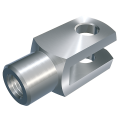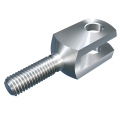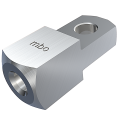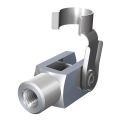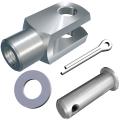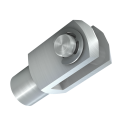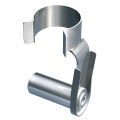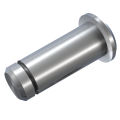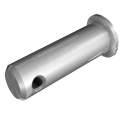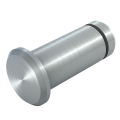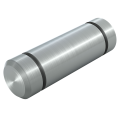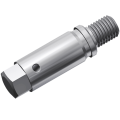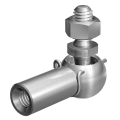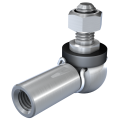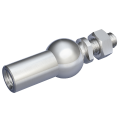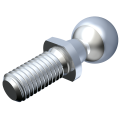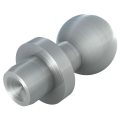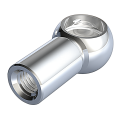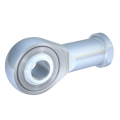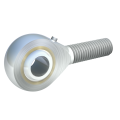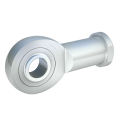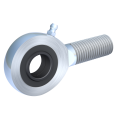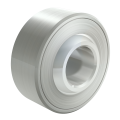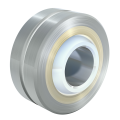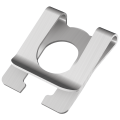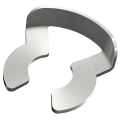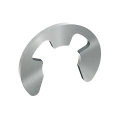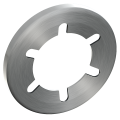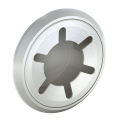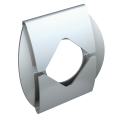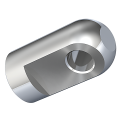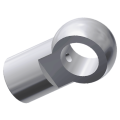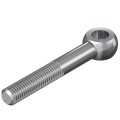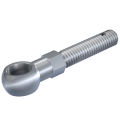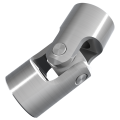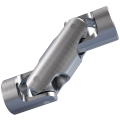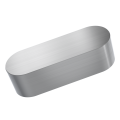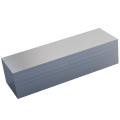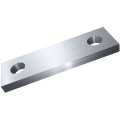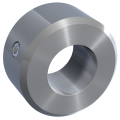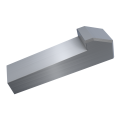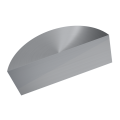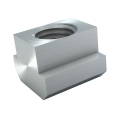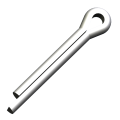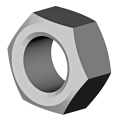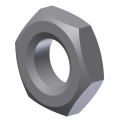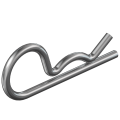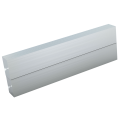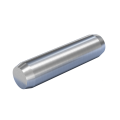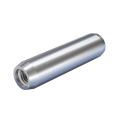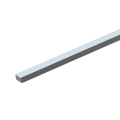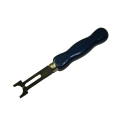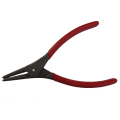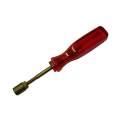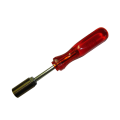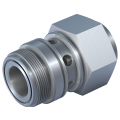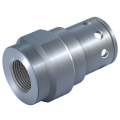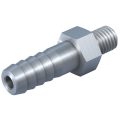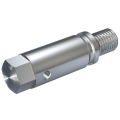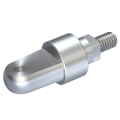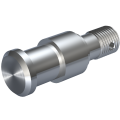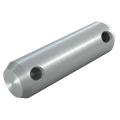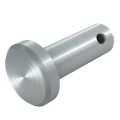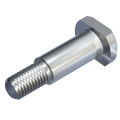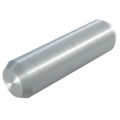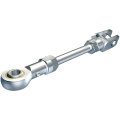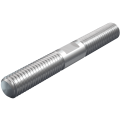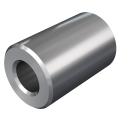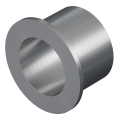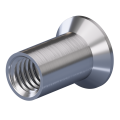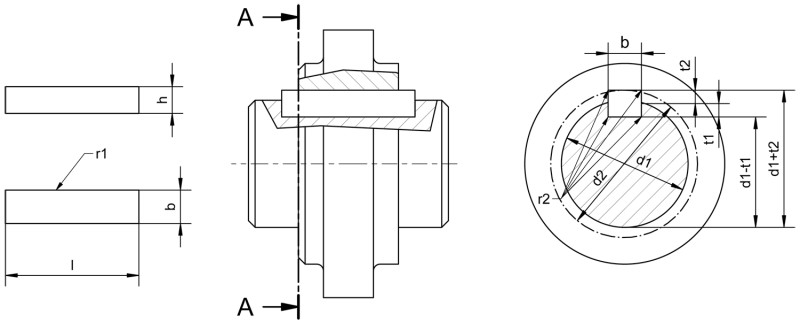Description
1. Product description
Parallel keys DIN 6885 form B (straight-ended, high-sized version) are widely used in mechanical engineering and plant construction when a reliable and torsion-proof connection between shaft and hub is required. These machine elements serve to transmit torques and prevent the coupled components from twisting relative to each other. The precise manufacturing and the high form of the parallel keys ensure the largest possible contact area between shaft and hub, which supports efficient and safe power transmission.
2. Product details
Size: B 2x2x6 - B 100x50x400
Material group: Steel, stainless steel
Surface: bright
Width b: 2 - 100
Height h: 2 - 50
Length l: 6 - 400
3. Application Areas & Compatibility
Mechanical engineering: Parallel keys are used in various applications such as gearboxes, couplings, pumps, and motors, ensuring reliable transmission of mechanical power. They are a central element in the assembly of rotating components and play a prominent role throughout general mechanical engineering when it comes to the secure connection and torque transmission between components.
Automation technology: They are also used in automation technology, as they enable precise control of the movements of mechanical components in automated manufacturing systems and robotic systems.
Drive technology and motor construction: In electric motors, generators, and other drive systems, parallel keys serve to securely fix rotors and other rotating parts.
Vehicle engineering: In numerous areas of vehicle engineering, parallel keys are used to securely connect drive shafts, wheel hubs, steering columns, and other components that transmit forces.
Wind energy: In wind turbines, parallel keys ensure reliable connections between the hub and driveshaft as well as at other heavily loaded connection points where high forces are at work.
Shipbuilding and marine: In shipbuilding, parallel keys are used to reliably secure propeller shafts, pumps, and other components of the drive system.
Conveying technology: In conveying technology, parallel keys are used to securely mount rollers, drums, and pulleys, thus ensuring efficient material transport.
Agricultural technology: Parallel keys are used in agriculture and forestry, among other things in tractors, harvesting machines, and a wide range of agricultural equipment, to ensure reliable power transmission.
Power engineering: In both conventional and renewable power plants, parallel keys are used to reliably secure turbines, generators, and other key components.
Compatibility: Parallel keys DIN 6885 form B are characterized by their high compatibility with a wide variety of shaft and hub designs. They are available in numerous dimensions, allowing them to be flexibly adapted to different shaft diameters and keyway widths. Careful selection of the appropriate size and specification is essential to ensure perfect fit and flawless function of the components. Furthermore, compliance with other relevant standards and application-specific requirements should be observed in order to maximize compatibility and performance in use.
4. Advantages and Benefits
Reliable power transmission: Thanks to their precise manufacturing and characteristic geometry, parallel keys fit exactly into the designated keyways of shaft and hub. This ensures safe power transmission and effectively prevents twisting or slipping under load.
Easy assembly and disassembly: A key advantage of parallel keys is their straightforward handling during installation and removal. No special tools or complex procedures are required for assembly or disassembly, saving both time and costs—especially during maintenance and repair work. This easy accessibility also makes checking and replacing worn parallel keys particularly simple, without damaging the shaft or hub.
High adaptability: Parallel keys according to DIN 6885 form B are available in numerous dimensions and made from different materials. As a result, they are suitable for a wide range of mechanical applications and various operating conditions. Whether for light mechanical tasks or demanding industrial applications with high loads, a suitable parallel key is available for almost any requirement.
Durability: Manufactured from robust key steel according to DIN 6880 or stainless steel, parallel keys are characterized by high strength and excellent corrosion protection. This means they remain fully functional and durable even under demanding conditions, such as outdoor use or contact with aggressive media.
Cost efficiency: Parallel keys stand out not only for their high reliability and performance but also represent a cost-effective option for power transmission. The uncomplicated assembly and the possibility of reusing parallel keys further help reduce overall costs.
Parallel keys according to DIN 6885 form B not only provide a reliable connecting solution for machine elements, but also make a significant contribution to increasing efficiency and cost-effectiveness in the design and maintenance of machines and systems. For this reason, they are among the preferred components for engineers and designers worldwide.
5. Assembly and Installation
Tools and preparation:
- Ensure that all required tools and the appropriate personal protective equipment are ready.
- Carefully check the dimensions of the shaft, hub, and parallel key to make sure all components are precisely matched.
- Thoroughly clean the slots of the shaft and hub to remove deposits, dirt, and traces of corrosion—this ensures optimal fit and functional reliability.
Inserting the parallel key:
- Carefully place the parallel key into the shaft's keyway. The parallel key must fit precisely - not too loose, but also not too tight. If necessary, you can gently drive it in with a plastic mallet. Be careful not to damage the parallel key when tapping it in.
- Then check that the parallel key is flush with the shaft surface or slightly below it, so that the hub can be slid on without resistance.
Mounting the hub:
- Carefully slide the hub onto the end of the shaft, ensuring the hub's slot is aligned exactly with the inserted parallel key.
- If needed, slight pressure or gentle assistance with a soft mallet may be required to position the hub correctly. Take care to avoid excessive force to prevent damage to the hub, shaft, or parallel key.
Final inspection and alignment:
- After assembly, check the exact alignment of the shaft and hub to ensure that the connection has been properly made and the parallel key is functioning correctly.
- Perform a visual inspection to confirm that the parallel key is fully seated in the slot, does not protrude, and there are no signs of improper assembly.
Maintenance:
- After assembly, the parallel key connection should be checked at regular intervals for wear and a secure fit, especially in applications subjected to high loads or vibrations. Careful assembly helps ensure the parallel key reliably performs its function and guarantees a long service life for the connection.
6. Safety instructions & Standards
When developing and assembling machine elements, such as parallel keys in accordance with DIN 6885 form B, it is essential to observe the applicable safety regulations and relevant standards. This not only minimizes the risk of accidents, but also ensures the reliability and performance of the mechanical connection.
DIN 6885 specifies the geometric designs, dimensions and tolerances for parallel keys used to connect rotating components with shafts. Compliance with this standard guarantees universal applicability and interchangeability of the parallel keys, thus contributing to optimized compatibility and functionality during installation.
Fast-track this part (max. 400 units) through our production facility. Shorten the delivery time by 1-2 working days. We are currently exclusively testing this delivery service for Germany.
incl. VAT
plus shipping costs
To cancel your filter settings again, click on the "Clear" button below the table.
You can display product details, including the eShop function and 3D model , by clicking in the row corresponding to the required article.
Frequently Asked Questions (FAQ)
What are parallel keys DIN 6885 form B?
What is the difference between parallel keys DIN 6885 form B (straight-ended, high-sized version) and parallel keys DIN 6885 form A (round-ended, high-sized version)?
The main difference between the two parallel key types lies in the design of the end faces:
- Straight-ended (form B): Parallel keys according to DIN 6885 form B have straight end surfaces. They are designed for keyway slots with right-angled ends and offer advantages in power transmission and secure positioning, especially under high torque and where precise positioning is required.
- Round-ended (form A): In contrast, parallel keys according to DIN 6885 form A have both ends rounded. This design is matched to keyways with rounded ends, making assembly easier and reducing the risk of damage to the slot or parallel key. It is particularly suitable for applications where the connection is rarely disassembled and easy assembly is desired.
Both variants are available in the high-sized version, which indicates a greater material thickness and therefore increased power transmission capacity. The choice of key type depends on the specific application requirements, the shaft-hub connection conditions, as well as on demands for ease of disassembly and installation precision.
Which dimensions are available for parallel keys DIN 6885 form B?
From which material are parallel keys DIN 6885 form B made?
For which fields of application are parallel keys used?
What effect does form B in particular have on the performance of parallel keys?
Optimal power transmission: Due to their straight end faces, parallel keys of form B can provide a larger contact surface, allowing the applied forces to be distributed more efficiently and evenly over the slot surfaces. This helps to minimize material fatigue and wear, which ultimately increases the service life of the connection.
Increased load capacity: Thanks to the better fit of the straight end faces in the slot ends, a parallel key of form B can minimize potential play in the connection, thereby increasing the load-bearing capacity and stability of the connection under torque and load.

